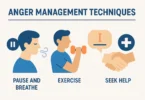Imagine a world where every effort, no matter how small, is recognized and encouraged. Whether in education, the workplace, or personal growth, positive reinforcement shapes behavior, boosts confidence, and fuels motivation. Unlike punishment or criticism, which often instill fear and hesitation, positive reinforcement builds momentum by celebrating progress.
At its core, positive reinforcement aligns with the growth mindset, a belief that skills and abilities can be developed through effort and learning. When used effectively, it encourages individuals to persist through challenges, embrace learning, and develop a strong sense of self-efficacy. But how does it work? And why is it so essential for long-term success?
In this article, we’ll explore the science behind positive reinforcement, its role in motivation, and how it can be applied to foster a growth mindset.
Headlines
How Positive Reinforcement Shapes a Growth Mindset
Effective Positive Reinforcement Techniques for Personal Growth
Overcoming Challenges in Implementing Positive Reinforcement
- Avoiding Over-Reliance on Rewards
- Shifting from a Fixed to a Growth Mindset
- How to Shift from a Fixed to a Growth Mindset
How Positive Reinforcement Shapes a Growth Mindset
The Science Behind Positive Reinforcement
Positive reinforcement is a powerful psychological tool that shapes behavior and enhances learning. Rooted in behavioral psychology, this concept was extensively studied by B.F. Skinner, one of the most influential psychologists in the field of operant conditioning.
B.F. Skinner’s Operant Conditioning and Behavioral Change
B.F. Skinner, a renowned behaviorist, introduced the principle of operant conditioning, which explains how behavior is influenced by consequences. He demonstrated that when a behavior is followed by a reward, individuals are more likely to repeat that behavior in the future.
- Example: If a student receives praise from a teacher for completing assignments on time, they are more likely to continue this habit due to the positive reinforcement received.
- Real-World Application: Companies use employee recognition programs to boost productivity by reinforcing good work with rewards like bonuses, promotions, or verbal praise.
In simple terms, positive reinforcement acts as a motivator, shaping behavior in ways that encourage learning, persistence, and self-improvement.
How Dopamine Strengthens the Positive Feedback Loop
The brain plays a crucial role in reinforcement through dopamine, a neurotransmitter associated with pleasure, motivation, and habit formation. When we experience a reward, the brain releases dopamine, which strengthens the positive feedback loop, making it easier to repeat the behavior.
- Neuroscientific Insight: Studies show that dopamine pathways in the brain reinforce learning and behavior by associating actions with positive outcomes.
- Practical Example: When someone receives positive feedback at work or a compliment from a friend, their brain associates that behavior with happiness, making them more likely to repeat it.
This explains why praise, encouragement, and rewards are so effective in developing a growth mindset. The brain learns through reinforcement, creating new neural connections that make positive habits automatic over time.
Neuroplasticity and Growth Mindset
The brain is not a fixed, unchangeable organ—it’s constantly adapting, rewiring, and evolving in response to experiences, learning, and reinforcement. This ability, known as neuroplasticity, is the foundation of how we develop new skills, break bad habits, and shift from a fixed mindset to a growth mindset.
What is Neuroplasticity?
Neuroplasticity refers to the brain’s ability to form and reorganize synaptic connections, especially in response to learning, experiences, and positive reinforcement. Contrary to past beliefs that intelligence and abilities are fixed, modern neuroscience has proven that our brains remain malleable throughout life.
- Example: When learning a new language or skill, the brain creates new neural pathways, making it easier to recall and apply that skill over time.
- Growth Mindset Connection: When we embrace challenges, our brain strengthens connections that allow us to improve, reinforcing the belief that effort leads to progress.
How Positive Reinforcement Supports Brain Rewiring
Positive reinforcement plays a crucial role in activating and strengthening neural pathways, making it an essential tool for building a growth mindset. When we receive praise, encouragement, or rewards, our brain releases dopamine, reinforcing the behavior and making us more likely to repeat it.
- Scientific Insight: Studies show that consistent reinforcement enhances long-term memory retention and skill acquisition.
- Real-World Example: A child praised for problem-solving skills (instead of just intelligence) is more likely to persist in difficult tasks, reinforcing a growth mindset over time.
The Link Between Habit Formation and Mindset Shifts
Neuroplasticity is also responsible for habit formation—a key element in sustaining a growth mindset. When behaviors are consistently reinforced, they become automatic, making it easier to embrace challenges, resilience, and learning from mistakes.
- Fixed Mindset vs. Growth Mindset:
- A fixed mindset assumes that intelligence and abilities are unchangeable.
- A growth mindset, fueled by positive reinforcement, recognizes that skills can be developed through effort and learning.
- Example: A person who struggles with public speaking but receives positive reinforcement for small improvements will eventually build confidence and skill, solidifying their belief in personal growth.
Final Thought
Neuroplasticity proves that change is possible at any stage of life. By using positive reinforcement strategically, we can train our brains to embrace challenges, persist through difficulties, and ultimately develop a growth mindset that leads to success.
Effective Positive Reinforcement Techniques for Personal Growth
Intrinsic vs. Extrinsic Motivation
Motivation is the driving force behind behavior, learning, and personal growth. It determines how persistent we are in achieving our goals and how we respond to challenges. When it comes to positive reinforcement and developing a growth mindset, two main types of motivation come into play:
- Intrinsic Motivation – Driven by internal rewards like passion, curiosity, and personal fulfillment.
- Extrinsic Motivation – Influenced by external rewards such as praise, money, or recognition.
Both types of motivation play a role in reinforcing behaviors, but understanding how to balance them is crucial for long-term growth and self-improvement.
Intrinsic Motivation: The Power of Internal Drive
Intrinsic motivation comes from within—it’s fueled by personal interest, enjoyment, and the satisfaction of achieving something meaningful. People who are intrinsically motivated engage in activities because they find them fulfilling, not because they expect an external reward.
Why Intrinsic Motivation Fosters a Growth Mindset
Intrinsic motivation is closely linked to the growth mindset because it encourages individuals to seek challenges, embrace learning, and persist despite difficulties. Since there’s no reliance on external rewards, people who are intrinsically motivated develop stronger problem-solving skills, creativity, and resilience.
- Scientific Insight: Research by psychologist Edward Deci and Richard Ryan, founders of Self-Determination Theory, shows that intrinsic motivation leads to greater engagement, better learning outcomes, and long-term success.
- Example: A student who enjoys math will naturally seek out challenging problems, improving their skills faster than someone who only studies for grades.
- Real-World Application: Entrepreneurs who pursue business because they love solving problems and creating value tend to be more successful than those who are primarily driven by financial gain.
How to Cultivate Intrinsic Motivation with Positive Reinforcement
- Encourage curiosity – Frame learning as an exciting challenge rather than a chore.
- Focus on progress, not perfection – Reinforce small achievements to maintain long-term engagement.
- Foster autonomy – Give individuals control over their learning and growth journey, making them more invested in the process.
Extrinsic Motivation: The Role of External Rewards
Extrinsic motivation is driven by external factors, such as money, praise, grades, promotions, or social recognition. While it can be a useful tool for behavior reinforcement, over-reliance on extrinsic rewards can sometimes undermine long-term motivation.
When Extrinsic Motivation is Beneficial
Extrinsic motivation can be effective in jumpstarting new behaviors, reinforcing positive habits, and providing short-term incentives. It’s particularly useful in:
- Early skill development – Encouraging beginners to stick with an activity until intrinsic motivation develops.
- Workplace settings – Rewarding employees with promotions or bonuses can drive performance.
- Overcoming resistance – Providing external reinforcement can help people take the first step toward personal growth.
The Pitfalls of Over-Reliance on External Rewards
- Decreased intrinsic motivation – Studies show that when people become dependent on external rewards, they may lose interest in the task itself (a phenomenon known as the Overjustification Effect).
- Short-term focus – Once the reward is removed, motivation often disappears.
- Fixed mindset trap – Individuals may start associating success only with external validation, making them fear failure instead of seeing it as a learning opportunity.
Balancing Extrinsic and Intrinsic Motivation
To develop a growth mindset, it’s essential to use extrinsic motivation strategically while fostering intrinsic motivation:
- Use praise wisely – Instead of saying, “You’re so smart,” reinforce effort-based behavior by saying, “I love how hard you worked on that problem!”
- Shift from rewards to meaning – Help individuals see the value in what they’re doing beyond external validation.
- Encourage self-reflection – Ask questions like, “What did you learn from this experience?” to reinforce internal growth.
Final Thought
Both intrinsic and extrinsic motivation play important roles in positive reinforcement and personal growth. While extrinsic rewards can help initiate new habits and reinforce positive behavior, intrinsic motivation is what sustains long-term passion, resilience, and a growth mindset. The key is to strike a balance—using external rewards as a stepping stone toward internal fulfillment and self-driven success.
The Role of Feedback and Encouragement
Feedback and encouragement are powerful forms of positive reinforcement that shape behavior, boost confidence, and support the development of a growth mindset. When delivered effectively, they help individuals understand their progress, refine their skills, and stay motivated in the face of challenges.
While constructive feedback guides improvement, encouragement fosters resilience, making it easier to embrace learning and effort rather than fear failure. In this section, we’ll explore how feedback and encouragement work together to reinforce growth-oriented behaviors.
Why Feedback is Essential for Growth
Feedback acts as a mirror, reflecting strengths and areas for improvement. Without it, personal and professional growth can stall, as individuals may not recognize what’s working or where they need to improve. However, not all feedback is equally effective. The way it’s delivered determines whether it motivates growth or discourages effort.
Characteristics of Effective Feedback
- Specific and Actionable – Instead of vague praise or criticism, effective feedback provides clear, concrete suggestions for improvement.
- ❌ “You need to work harder.”
- ✅ “I noticed you struggled with time management on this project. Maybe using a planner could help you stay organized.”
- Growth-Oriented, Not Fixed – Feedback should focus on effort, strategies, and progress rather than labeling someone’s ability.
- ❌ “You’re just not good at math.”
- ✅ “I can see you’re improving! Trying a different approach might help with this equation.”
- Balanced (Strengths + Areas for Improvement) – Encouraging feedback acknowledges achievements while offering guidance on what can be improved.
- Example: “Your presentation was well-structured, and your examples were engaging. Next time, try slowing down a bit to emphasize key points.”
- Timely and Consistent – Feedback should be given soon after an action to ensure it’s relevant and meaningful.
Encouragement as a Form of Positive Reinforcement
While feedback provides direction, encouragement fuels motivation and persistence. Encouragement focuses on effort, resilience, and potential, reinforcing the idea that challenges are opportunities for growth.
The Psychological Benefits of Encouragement
- Boosts Self-Confidence – Regular encouragement helps individuals believe in their abilities, making them more likely to take risks and embrace challenges.
- Strengthens Intrinsic Motivation – Encouragement fosters internal drive, reducing dependence on external rewards.
- Reduces Fear of Failure – Encouraging words help reframe mistakes as part of the learning process rather than as personal shortcomings.
How to Encourage a Growth Mindset
- Acknowledge Effort Over Outcomes – Reinforce persistence and learning rather than just results.
- ✅ “I love how you kept going even when the task was difficult!”
- Celebrate Progress, Not Just Perfection – Recognize small improvements to build momentum.
- ✅ “You’re getting better at explaining your ideas clearly!”
- Reframe Mistakes as Learning Opportunities – Encourage a mindset where challenges are stepping stones to success.
- ✅ “It didn’t work this time, but what did you learn from it?”
The Feedback-Encouragement Loop: A Cycle of Growth
Feedback and encouragement work best when used together in a continuous loop:
- Observation – Identify behaviors, strengths, and areas for improvement.
- Constructive Feedback – Offer clear guidance on what’s working and what can be refined.
- Encouragement – Reinforce the value of effort, persistence, and learning.
- Application & Growth – Individuals take action based on feedback, improving over time.
This cycle helps individuals develop self-awareness, build confidence, and cultivate a mindset that embraces learning.
Final Thought
Feedback without encouragement can feel discouraging, while encouragement without feedback lacks direction. When used together, they create a powerful reinforcement system that supports personal growth, learning, and long-term success. By giving thoughtful feedback and genuine encouragement, we can help ourselves and others unlock hidden potential and develop a true growth mindset.
Overcoming Challenges in Implementing Positive Reinforcement
Avoiding Over-Reliance on Rewards
Positive reinforcement plays a key role in building habits, fostering motivation, and encouraging a growth mindset. However, relying too much on external rewards—such as praise, money, or prizes—can lead to unintended consequences. Over time, individuals may become dependent on rewards to stay motivated rather than developing an internal drive for growth and learning.
This section explores the pitfalls of excessive reliance on rewards, the psychological effects, and strategies to balance external reinforcement with intrinsic motivation.
The Downsides of Over-Reliance on Rewards
While rewards can be effective short-term motivators, excessive use can lead to:
1. The Overjustification Effect
Psychological research suggests that when external rewards are introduced for an activity someone already enjoys, their intrinsic motivation may decline. This phenomenon is known as the Overjustification Effect—first studied by Edward Deci, Richard Ryan, and Mark Lepper.
- Example: A child who enjoys drawing for fun might lose interest if they are always rewarded for their drawings. Instead of drawing for enjoyment, they start drawing only for the reward.
- Consequence: The activity shifts from being internally fulfilling to externally motivated, making it less enjoyable over time.
2. Short-Term Compliance, Long-Term Dependence
- Issue: When rewards are the primary motivation, individuals stop engaging in the behavior once the reward is removed.
- Example: An employee might work harder when promised a bonus, but once the bonus disappears, their motivation drops.
- Solution: Reinforce self-driven motivation by helping individuals connect to personal growth and purpose.
3. Reduced Risk-Taking and Creativity
Over-reliance on rewards can lead to risk avoidance, as individuals may fear failure and avoid challenges that don’t guarantee immediate rewards.
- Example: A student rewarded only for getting perfect scores might avoid difficult subjects to ensure they keep receiving praise.
- Solution: Encourage effort and learning rather than just correct results.
How to Balance Rewards with Long-Term Growth
Instead of eliminating rewards entirely, the goal is to use them strategically while fostering intrinsic motivation.
1. Use Rewards as a Stepping Stone, Not a Crutch
- Short-term: Rewards can help initiate behaviors, such as starting a new habit.
- Long-term: The goal is to shift motivation inward so that external rewards are no longer needed.
- Example:
- Instead of giving money every time a child reads, start by rewarding the habit, then gradually help them discover the joy of reading itself.
2. Shift from External Rewards to Internal Satisfaction
To encourage self-motivation, individuals need to find personal meaning in what they do.
- Example: Instead of rewarding students only for good grades, help them appreciate the process of learning by linking knowledge to real-life applications.
- Strategy: Ask growth-oriented questions:
- “What was the most interesting thing you learned?”
- “How did you improve compared to last time?”
3. Reinforce Effort and Persistence, Not Just Outcomes
- Avoid: Rewarding only perfect scores or winning.
- Encourage: Acknowledging effort, creativity, and perseverance.
- Example:
- Instead of saying “You’re so smart!”, say “I love how you tackled that difficult problem with different strategies!”
4. Gradually Reduce Rewards Over Time
- Strategy: Transition from material rewards to intrinsic motivators such as personal pride, autonomy, and mastery.
- Example: If an employee receives a bonus for meeting deadlines, gradually shift the focus toward how their work contributes to the company’s success.
Final Thought
Rewards can be a powerful motivator when used correctly, but over-reliance can reduce intrinsic motivation and hinder long-term growth. The key is to balance reinforcement with encouragement, autonomy, and a focus on personal development. By shifting from external validation to internal satisfaction, individuals are more likely to develop a sustainable growth mindset that thrives beyond external incentives.
Shifting from a Fixed to a Growth Mindset
A fixed mindset is the belief that abilities, intelligence, and talents are static traits—they cannot be developed. In contrast, a growth mindset is the belief that skills and intelligence can be cultivated through effort, learning, and perseverance. The shift from a fixed mindset to a growth mindset is essential for personal development, resilience, and long-term success.
In this section, we’ll explore the characteristics of both mindsets, the barriers to change, and strategies to embrace a growth-oriented perspective.
Fixed Mindset vs. Growth Mindset: Key Differences
| Fixed Mindset | Growth Mindset |
|---|---|
| Believes abilities are innate and unchangeable | Believes abilities can develop with effort |
| Avoids challenges for fear of failure | Embraces challenges as opportunities to grow |
| Views effort as pointless if talent is lacking | Sees effort as the path to mastery |
| Gets discouraged by setbacks | Uses setbacks as learning experiences |
| Feels threatened by others’ success | Feels inspired by others’ success |
| Avoids feedback or takes it personally | Welcomes constructive feedback to improve |
Example:
- A fixed mindset response to failure: “I’m just not good at this. There’s no point in trying.”
- A growth mindset response to failure: “This was tough, but I can improve if I keep practicing.”
Why Do People Get Stuck in a Fixed Mindset?
Many people struggle to shift to a growth mindset because of deep-seated beliefs and past experiences. Some common barriers include:
- Fear of Failure – People with a fixed mindset see failure as a sign of incompetence rather than an opportunity to learn.
- Early Conditioning – If someone was praised only for their natural intelligence or talent as a child, they may fear making mistakes later in life.
- Comparison to Others – Constantly measuring success against others instead of personal progress can reinforce a fixed mindset.
- Negative Feedback Experience – If past feedback was overly critical or discouraging, individuals may resist constructive criticism.
- Desire for Instant Results – A fixed mindset often leads to frustration when results don’t come quickly.
How to Shift from a Fixed to a Growth Mindset
Developing a growth mindset requires intentional effort, self-awareness, and a willingness to embrace discomfort. Here’s how:
1. Reframe Challenges as Opportunities
- Instead of avoiding challenges, embrace them as a chance to grow.
- Example: If learning a new skill feels overwhelming, remind yourself that every expert was once a beginner.
2. Change the Way You Talk to Yourself
The language we use internally can reinforce either mindset.
- Fixed mindset self-talk: “I’ll never be good at this.”
- Growth mindset self-talk: “I’m not there yet, but I can improve with practice.”
Strategy:
- Replace “I can’t do this” with “I can’t do this yet.”
- Replace “I’m bad at this” with “I need more practice.”
3. Focus on Effort, Not Just Talent
- Instead of thinking “I’m just not a math person”, recognize that math skills can be developed through practice.
- Effort and persistence are more important indicators of success than innate talent.
4. See Mistakes as Lessons, Not Failures
- Every mistake provides valuable insight.
- Example: Instead of thinking “I failed my presentation”, reflect on “What did I learn from this experience?”
5. Seek Constructive Feedback
- Feedback is not a judgment—it’s a tool for growth.
- Example: Instead of feeling defensive, ask yourself “How can I use this feedback to improve?”
6. Learn from Others’ Success
- Instead of feeling threatened by others’ achievements, analyze what they did to succeed and apply those lessons to your own journey.
- Example: If a colleague gets a promotion, instead of thinking “I’ll never be that good,” ask, “What strategies did they use to get there?”
7. Embrace the Power of ‘Yet’
- The word “yet” reminds us that growth is a process.
- Example: Instead of saying “I can’t do this”, say “I can’t do this yet.”
Final Thought
Shifting from a fixed mindset to a growth mindset isn’t an overnight process—it requires conscious effort and practice. However, by embracing challenges, rethinking failure, and focusing on continuous improvement, anyone can cultivate a mindset that fosters resilience, learning, and long-term success.
Would you like to add real-life examples, studies, or additional practical exercises to enhance this section? 😊








Leave a Comment